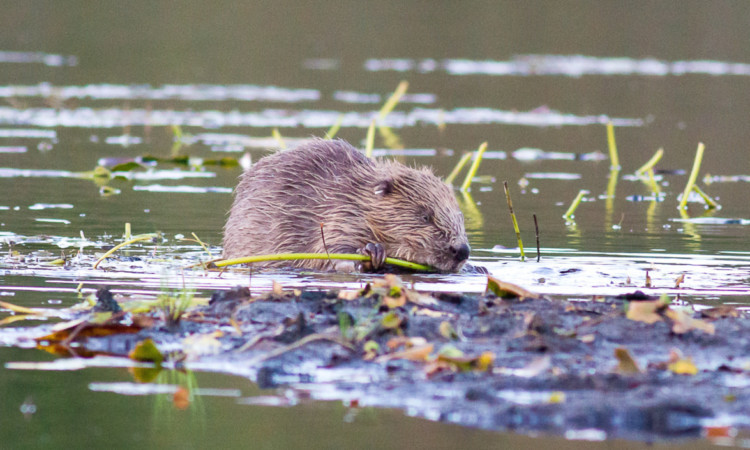The Scottish Beaver Trial is a unique and exciting conservation project and if it is a success, beavers could once again become a common sight in our countryside. Caroline Lindsay finds out more.
Uuntil the 16th century, beavers lived throughout Scotland. They were hunted to extinction for their fur and a glandular oil (castoreum) secreted from the base of their tail containing medicinal properties, which in medieval times was used as treatment for headaches.
Under the Scottish Beaver Trial, which is led by the Scottish Wildlife Trust and the Royal Zoological Society of Scotland, and hosted by Forestry Commission Scotland, wild beavers have been reintroduced back into Scotland after being extinct in the UK for over 400 years.
It is the first official project of its kind in Britain and a groundbreaking five-year study to explore how beavers can enhance and restore natural environments.
The Eurasian beavers, all caught in the Telemark region of Norway, were released into Knapdale Forest in Argyll in 2009 and since then they’ve been busy settling into their new home; building lodges and nurturing newborn family members.
Four beaver families have now been reintroduced and visitors can explore the woodland and spot the signs of beaver activity.
But how has this reintroduction gone down with the general public? Beavers are known to benefit the environment in many ways: as tree felling, dam building champions, they are what’s known as a keystone species one which affects the survival and abundance of other wildlife in the community in which it lives.
Beavers create ponds and wetlands, which attract other species such as frogs, toads, water voles, otters, dragonflies, birds and fish, and even help improve water quality.
In woodlands, beavers help to stimulate new growth by gnawing on tree stems and coppicing.
This helps to breathe new life into tired forests and creates a diverse age range of trees, which greatly benefits woodland management.
Not everyone is thrilled at the notion of the reintroduction of a mammal that can flood areas and bring down trees, however.
That said, a recent YouGov poll has found that 60% of us support the project.
Simon Jones, project manager of the Scottish Beaver Trial, explains: “This is the first formal trial reintroduction of a mammal ever to take place in the UK and it is really positive to see majority support for the reintroduction of beavers to Scotland.
“Separate feedback from several business owners in the Argyll area has also been positive and suggests that the Scottish Beaver Trial has boosted visitor numbers.
“Monitoring the social and economic benefits of beavers to the local area was always one of the trial’s major aims.
“We hope that any benefits will be lasting.
“The beavers will remain in Knapdale Forest until a decision on their future is made by the Scottish Government and therefore we will be continuing guided walks in the spring and summer months, so members of the public will be able to visit the site and learn about these fascinating creatures.
“Hopefully this will also give those people who have not yet seen the beavers the chance to do so before a decision is reached.”
Throughout the trial, an independent scientific monitoring programme has been coordinated by Scottish Natural Heritage to assess the effect beavers have on the local environment.
After the trial concludes this month, the impact of the beavers’ activities on the environment and economy will be assessed before a Scottish Government decision is reached in 2015.
Will this pave the way for the reintroduction of other species into Scotland. Simon says: “It’s not a new concept and species including red kite and sea eagles have already been successfully reintroduced.
“There’s a whole debate around reintroduction of species but there are very tight guidelines and any new reintroduction would have to be licensed by the Scottish Government.”
Landowner Paul Lister announced last year that he was keen to introduce bears and wolves to his estate in Sutherland but, not surprisingly, the plans have drawn criticism.
Drew McFarlane-Slack of the landowners’ organisation, Scottish Land and Estates, said at the time: “We would support what Mr Lister is doing in terms of peatland restoration, work with red squirrels and Scottish wildcats, which are native animals.
“But the reintroduction of big carnivores would require great care and it’ll be many years before we can get to a point where there could be a general release of these.”
